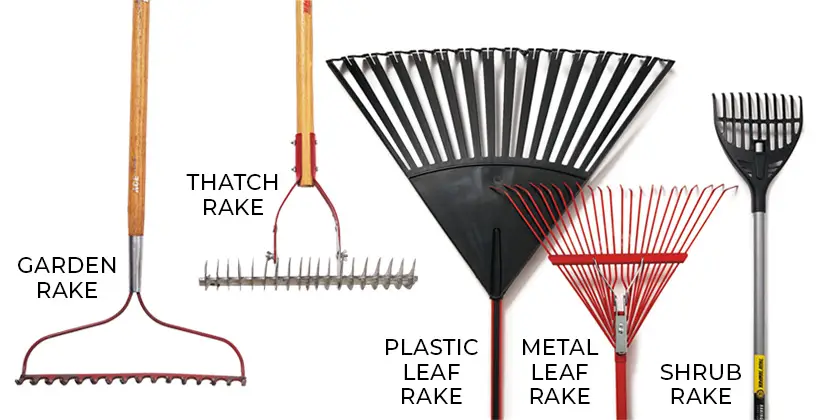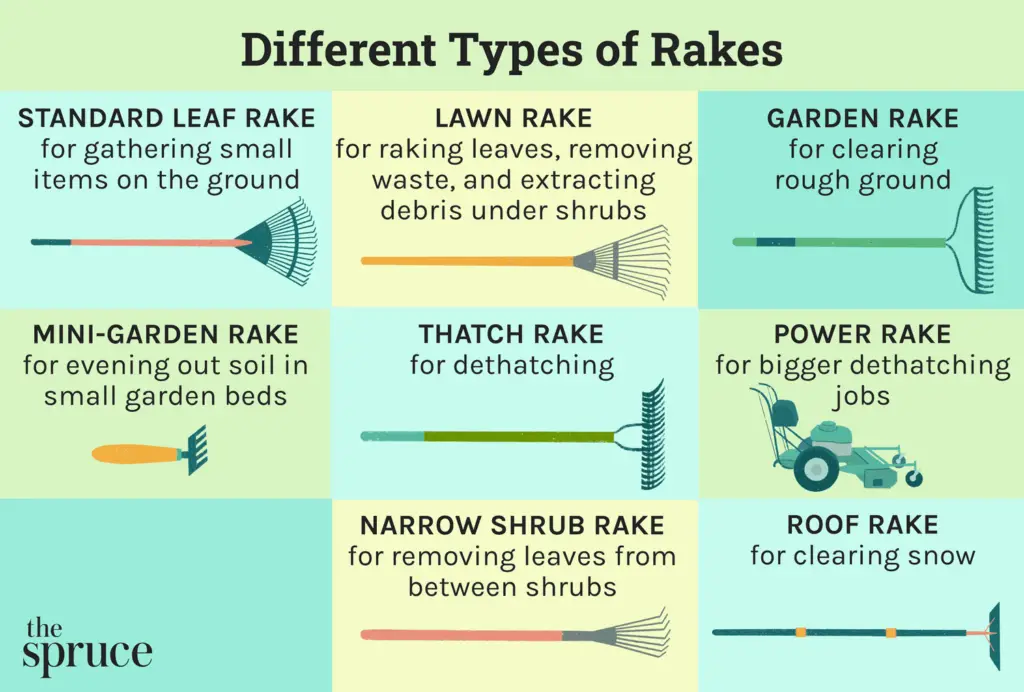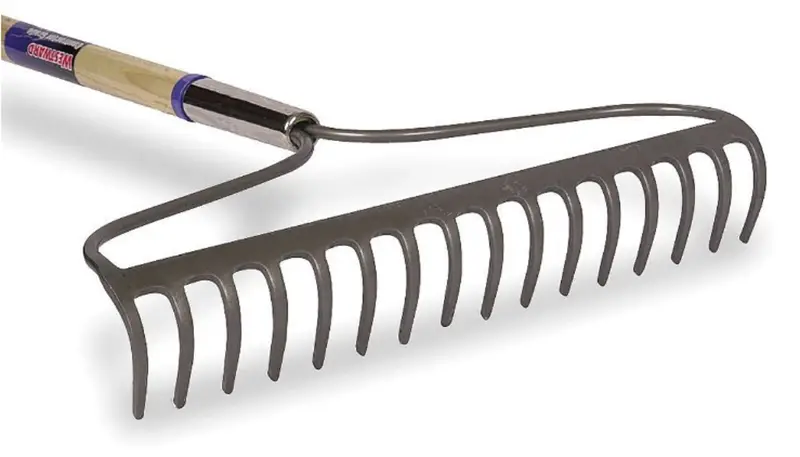This post may contain affiliate links which means I may receive a commission for purchases made through links. Learn more on my Private Policy page.
Are you a farmer in search of the perfect rake for your farm? Look no further! This article will guide you through the process of selecting the ideal rake that suits your farming needs. Whether you’re looking to make your job easier or improve the efficiency of your farm, we’ve got you covered. With a wide variety of rakes available in the market, it can be overwhelming to make the right choice. But worry not, because we’ll provide you with valuable insights, tips, and considerations to ensure that you choose the perfect rake for your farm. Get ready to revolutionize your farming experience!
Types of Rakes
When it comes to choosing the right rake for your farm, it’s important to consider the specific needs and requirements of your land and the tasks at hand. There are a variety of rake types available, each designed for different purposes. Let’s take a closer look at some of the common types of rakes you might come across:
1. Hay Rakes
Hay rakes are specifically designed for gathering and moving hay. They have long and sturdy tines, often in the form of wheels, which make it easier to gather and transport large quantities of hay. If you have a farm where hay is a prominent crop, a hay rake would be an ideal choice.
2. Garden Rakes
Garden rakes are typically used for the maintenance and preparation of garden beds. They are lightweight and have short, sturdy tines that allow for effective soil leveling and removing debris like leaves and stones. If you have a smaller farm or a garden area that requires regular maintenance, a garden rake is a versatile option.
3. Landscape Rakes
Landscape rakes are heavy-duty tools designed for grading, leveling, and smoothing uneven surfaces. They often feature longer and more flexible tines compared to other rakes, making them ideal for spreading gravel, removing rocks, or leveling dirt. If you have a larger farm with uneven terrain or are in the process of landscaping your property, a landscape rake can be a valuable asset.
4. Leaf Rakes
As the name suggests, leaf rakes are specifically designed for raking and gathering leaves. They have wide, fan-like heads with flexible tines that make it easier to collect leaves without damaging the grass or soil underneath. Leaf rakes are especially handy during the fall season when leaves are in abundance and need to be collected efficiently.
5. Tine Rakes
Tine rakes, also known as spring rakes, are versatile tools that can be used for various purposes. They have long, narrow, and closely spaced tines, making them suitable for tasks like spreading mulch, leveling soil, or removing debris. Tine rakes are commonly used in both small and large-scale farming operations.
6. Row Crop Rakes
Row crop rakes are specially designed for row-oriented crops, such as vegetables or fruits. They have adjustable tines that can be spaced out to match the crop rows, allowing for efficient gathering and cleaning. If you have a farm with row crops, a row crop rake can help streamline the harvesting and cleaning process.
7. Rock Rakes
Rock rakes, also known as landscape rakes or rock hounds, are heavy-duty tools used for removing rocks and debris from soil or gravel surfaces. They feature long and sturdy tines with a slight curve, allowing for effective rock and debris collection without disturbing the soil. Rock rakes are particularly useful for farms with rocky landscapes or construction projects.
8. Silage Rakes
Silage rakes are specialized tools used for handling and distributing silage. They have wide heads with closely spaced tines, allowing for efficient movement and distribution of silage. If you have livestock and need to handle large quantities of silage, a silage rake is an essential tool to have.
9. Manure Rakes
Manure rakes, also called stable rakes, are designed to handle the task of cleaning and raking manure in livestock barns or stables. They often have long and sturdy tines that make it easier to scoop and remove manure. If you have horses, cows, or other livestock, a manure rake will be indispensable for maintaining a clean and hygienic environment.
10. Thatching Rakes
Thatching rakes, sometimes known as dethatching rakes, are used for removing thatch from lawns or grassy areas. They have curved tines that effectively lift and detach dead grass and debris, allowing for healthier and lusher grass growth. If you have large grassy areas on your farm, a thatching rake can help maintain the overall health and appearance of your lawn.

This image is property of images.ctfassets.net.
Considerations for Rake Selection
Now that we have explored the different types of rakes available, let’s delve into some important considerations to keep in mind when selecting the right rake for your farm:
1. Farm Requirements
First and foremost, assess your farm’s specific needs and requirements. Consider the tasks you will be performing frequently and the types of materials or debris you will be dealing with. Understanding your farm’s unique demands will help you narrow down the options and choose a rake that is best suited for your needs.
2. Surface Type
The type of surface you will be working on is another crucial factor to consider. Different rakes are better suited for different surfaces. For example, if you have a grassy lawn or garden bed, a rake with flexible tines like a leaf or garden rake would be more appropriate, while a landscape rake would be ideal for rough, uneven terrains.
3. Size of the Farm
The size of your farm plays a role in determining the scope of your raking tasks. If you have a large farm with extensive acreage, investing in a larger rake with a wider head or longer handle may be more efficient and save you time and effort.
4. Rake Material
The material of the rake affects its durability and performance. Common rake materials include wood, steel, and plastic. Wood rakes are lightweight and ideal for lighter tasks, while steel rakes are more sturdy and can withstand heavier use. Plastic rakes are often more affordable but may not be as durable as their wooden or steel counterparts.
5. Durability and Lifespan
Consider the durability and expected lifespan of the rake you are considering. Rakes with reinforced tines or those made from high-quality materials tend to be more durable and long-lasting. Investing in a rake that can withstand the demands of your farm will save you from having to replace it frequently.
6. Ergonomics
Raking can be physically demanding, so it’s important to choose a rake that is ergonomically designed. Look for features like cushioned handles or adjustable lengths that can reduce strain on your body and make raking more comfortable.
7. Cost
The cost of a rake is another important factor to consider. Rakes range in price depending on their type, material, and quality. It’s essential to find a balance between your budget and the quality of the rake you choose. Remember, investing in a higher-quality rake may save you money in the long run by reducing the need for replacements.
8. Storage Space
Consider the amount of storage space you have available for your rake. Some rakes, like landscape rakes, can have larger dimensions and may require dedicated storage space. If storage is limited on your farm, opt for a rake that is compact and easy to store.
9. Maintenance Requirements
Different rakes have different maintenance needs. Some may require regular cleaning or sharpening, while others may need occasional oiling or rust prevention. Take into account your ability and willingness to maintain the rake properly when making your selection.
10. Brand Reputation
Lastly, consider the reputation and reliability of the brand you are purchasing from. Well-established brands often provide better customer support and higher-quality products. Take the time to research and read reviews to ensure you are getting a rake from a reputable manufacturer.
By carefully considering these factors and the specific needs of your farm, you can confidently select the most suitable rake to efficiently tackle your tasks and maintain the health and appearance of your land. Remember, choosing the right rake is an investment in the productivity and success of your farm. Happy raking!

This image is property of www.thespruce.com.
This post may contain affiliate links which means I may receive a commission for purchases made through links. Learn more on my Private Policy page.

